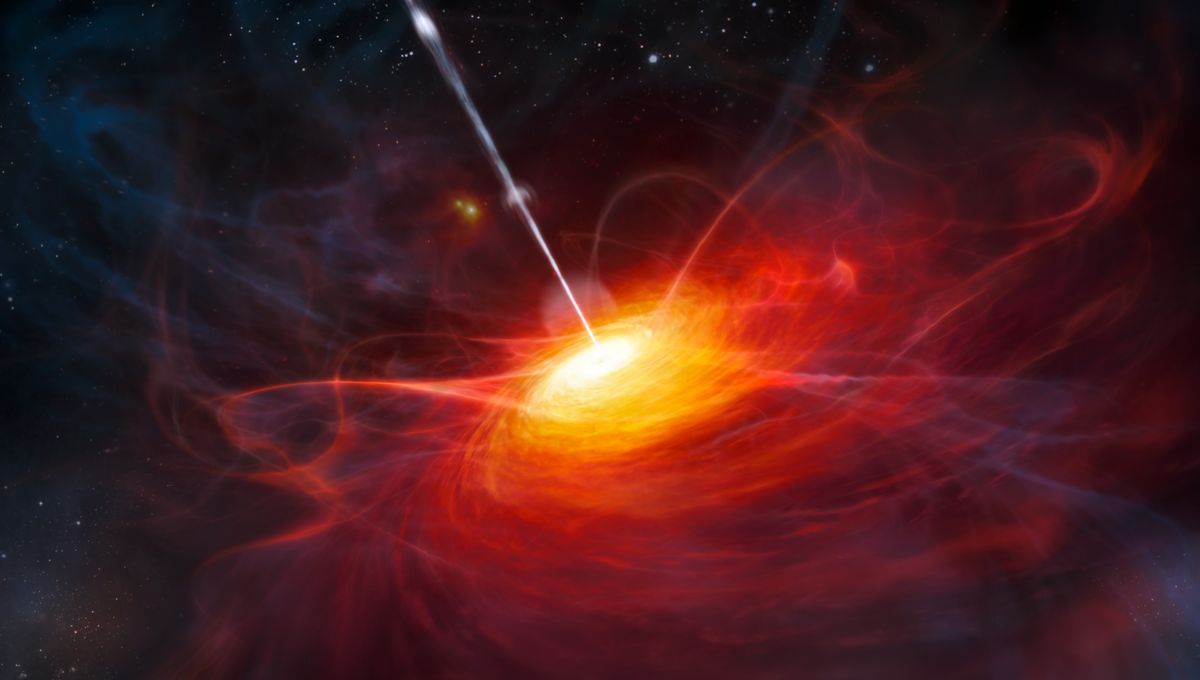
Astronomers have discovered a supermassive black hole of exceptional proportions in the early universe. Its light comes to us from when the cosmos was just over 764 million years old. And yet this black hole is a big one, estimated to weigh 40 million times the mass of our Sun.
The team was able to see this object thanks to gravitational lensing. The gravity of a foreground object warped space-time to such a degree that it magnified this compact red object. Using JWST, the team was able to study the spectrum of its light. The supermassive black hole is shrouded in dust and accreting material with intensity. This material is spinning around it at a very high speed.
“Using the spectra, we managed to not only confirm that the red compact object was a supermassive black hole and measure its exact redshift, but also obtain a solid estimate for its mass from the width of its emission lines,” co-lead author Dr Lukas Furtak, from Ben-Gurion University of the Negev, said in a statement.
“Gas is orbiting in the gravitational field of the black hole and achieves very high velocities that are not seen in other parts of galaxies. Because of the Doppler shift, light emitted by the accreting material is red-shifted on one side and blue-shifted on the other side, according to its velocity. This causes emission lines in the spectrum to become broader.”
The object is a quasar, the active state of a supermassive black hole. It’s outshining its host galaxy but also it appears to be heavier than it should – something that astronomers have found in several very distant galaxies. A typical supermassive black hole should be about 0.1 percent of the star mass of the galaxy but these overmassive black holes are at least 10 times bigger than that.
“All the light of that galaxy must fit within a tiny region the size of a present-day star cluster. The gravitational lensing magnification of the source gave us exquisite limits on the size. Even packing all the possible stars into such a small region, the black hole ends up being at least 1 percent of the total mass of the system,” added the co-lead Professor Jenny Greene from Princeton University.
“In fact, several other supermassive black holes in the early universe have now been found to show a similar behavior, which lead to some intriguing views of black hole and host galaxy growth, and the interplay between them, which is not well understood.”
Black hole growth and galaxy growth have a well-defined relationship in the more recent universe but in the first few hundred million years after the Big Bang, things are very different. And JWST is helping by finding these overmassive objects.
A paper describing the results is published in Nature.
Source Link: Red Shrouded Supermassive Black Hole Is Also Too Big For Its Galaxy